Abstract
We wanted to assess the relative influence of various personal and family factors upon the development of ventilatory function in young children. The relationship of several such factors to peak expiratory flow rates measured at the age of five years was studied in 454 children. These children were members of a birth cohort born between 1963 and 1965 in Harrow, north-west London, who were examined regularly from birth through the first five years of life. Beside its expected association with height, peak expiratory flow rate at the age of five years was also related to a lesser extent with peak expiratory flow rate in parents. Children with a history of lower respiratory illness had mean peak flow rates which were lower than those of children who escaped these illnesses. The earlier the onset of the illness and the more frequent its recurrence, the more marked its effect on ventilatory function. The group of children with a history of asthma and bronchitis had the lowest mean peak expiratory flow rate, but a history of bronchitis or pneumonia alone (that is, without asthma) was also associated with reduced ventilatory function. Respiratory illness beginning in the first year of life was the most potentially modifiable determinant of peak expiratory flow rate in children in this study.
Full text
PDF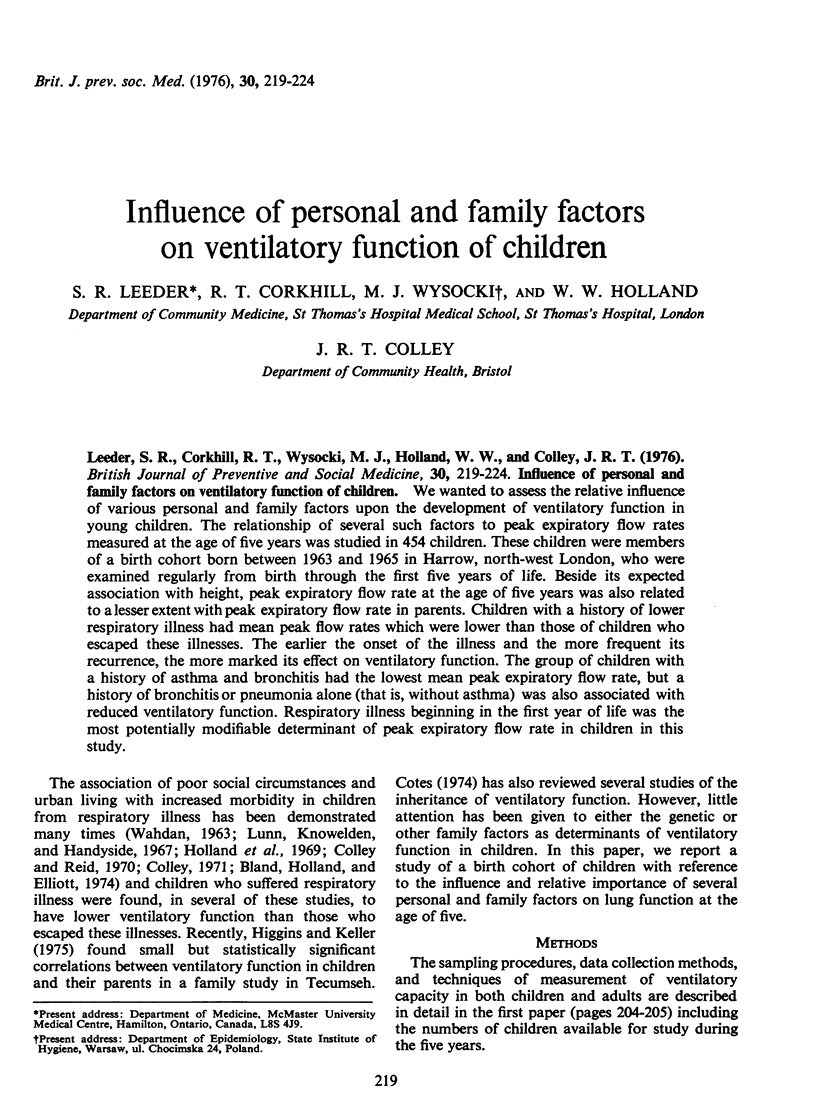
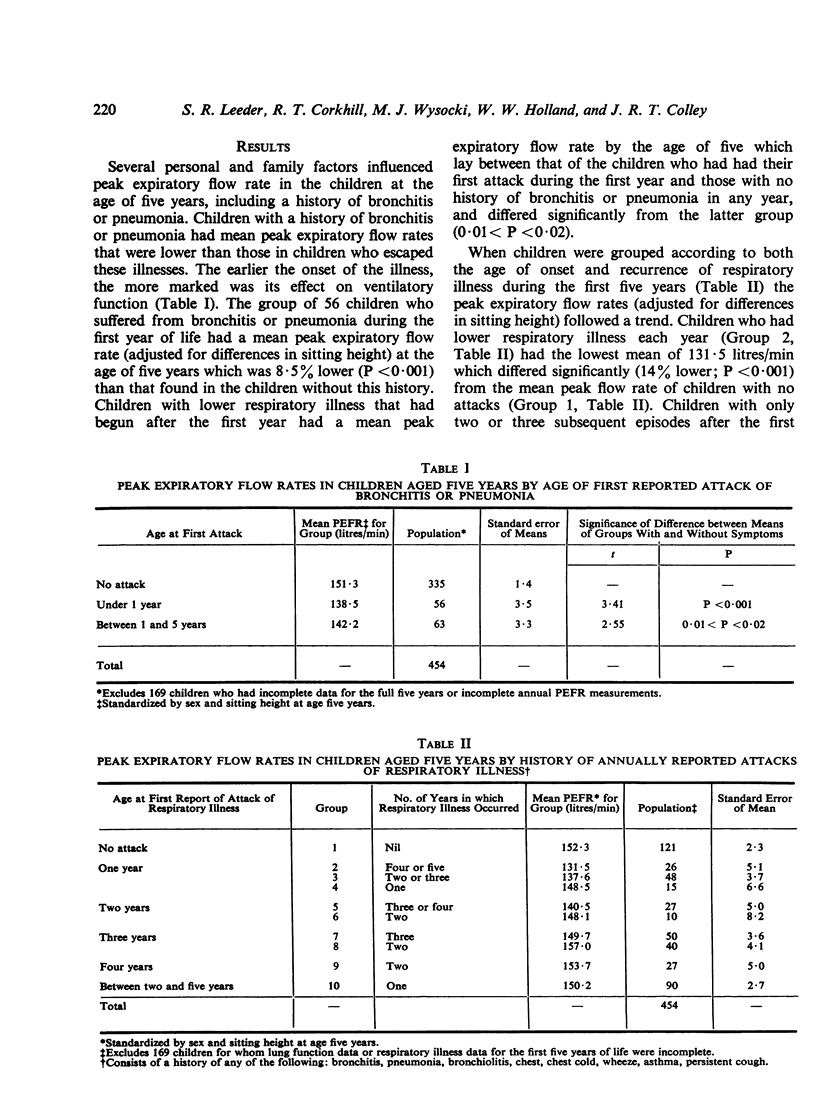
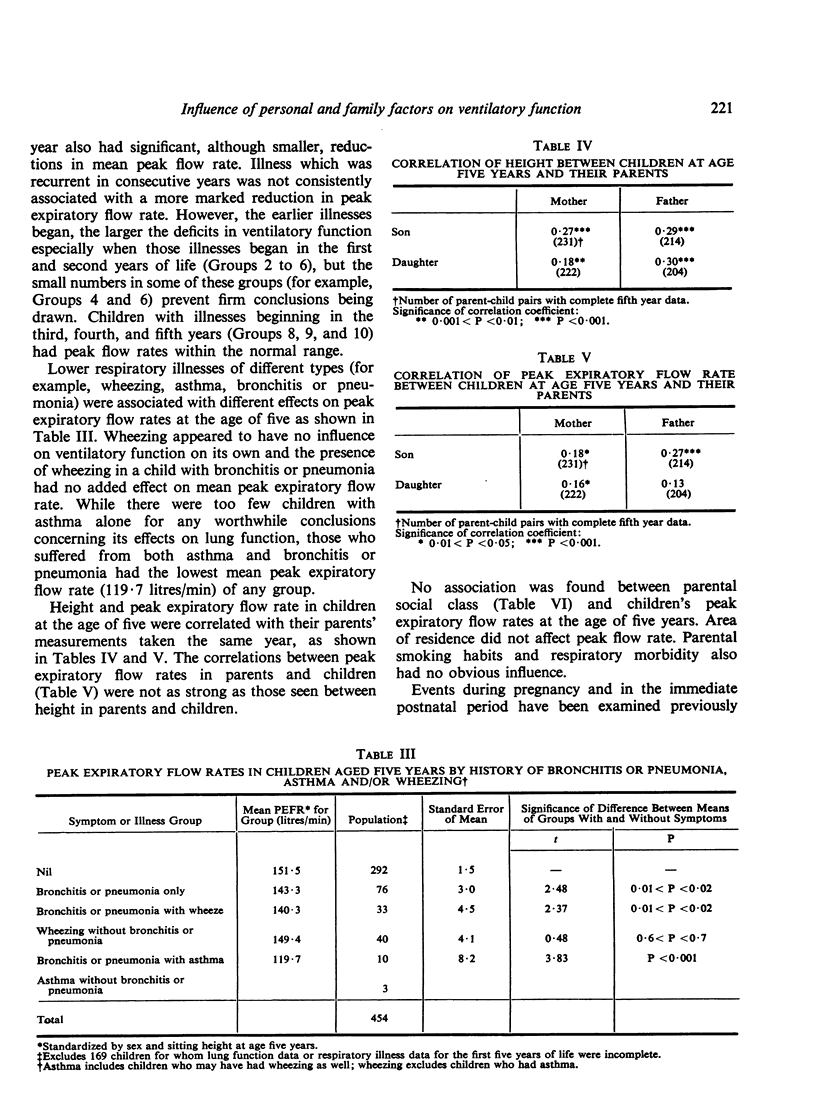
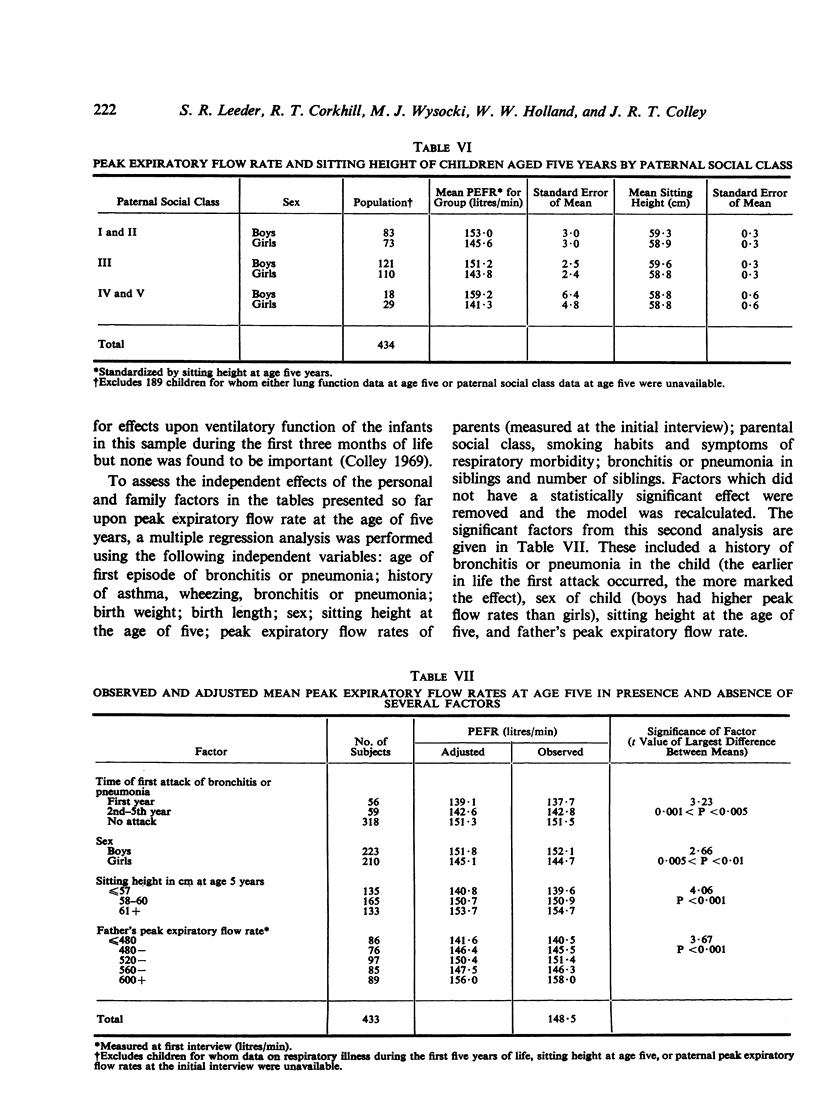
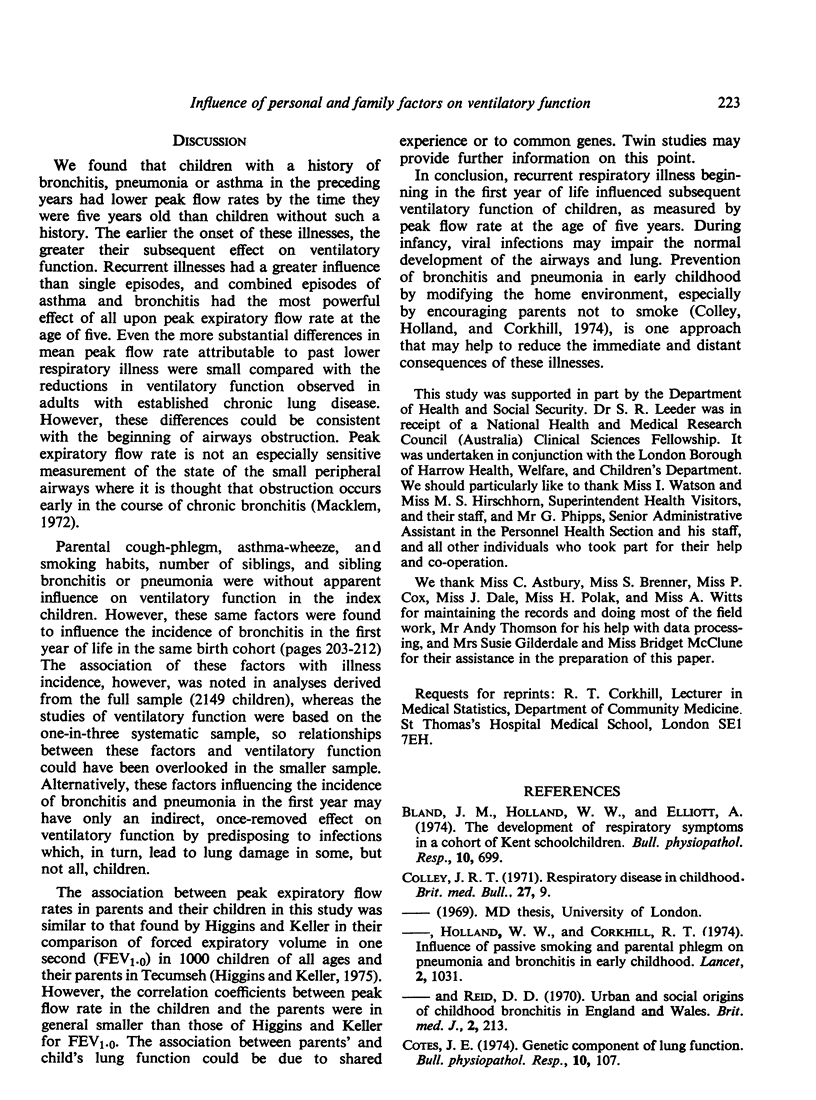
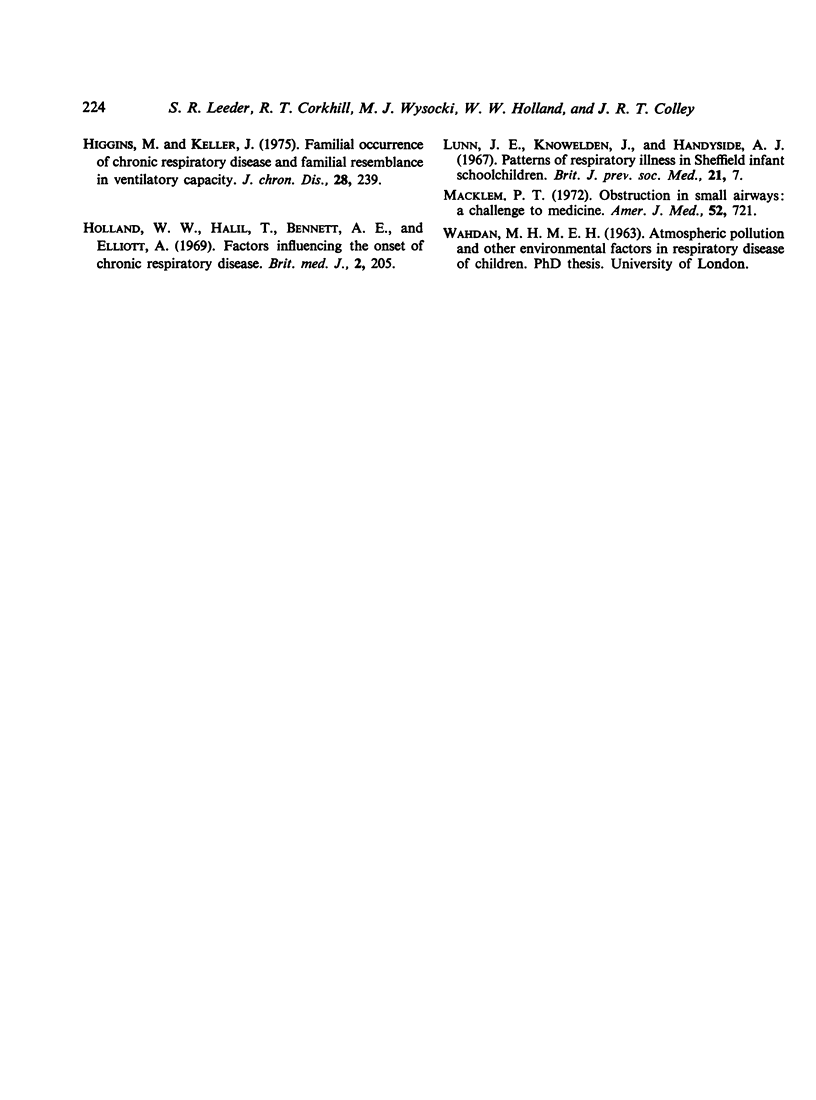
Selected References
These references are in PubMed. This may not be the complete list of references from this article.
- Bland J. M., Holland W. W., Elliott A. The development of respiratory symptoms in a cohort of Kent schoolchildren. Bull Physiopathol Respir (Nancy) 1974 Sep-Oct;10(5):699–715. [PubMed] [Google Scholar]
- Colley J. R., Holland W. W., Corkhill R. T. Influence of passive smoking and parental phlegm on pneumonia and bronchitis in early childhood. Lancet. 1974 Nov 2;2(7888):1031–1034. doi: 10.1016/s0140-6736(74)92148-5. [DOI] [PubMed] [Google Scholar]
- Colley J. R. Respiratory dieease in childhood. Br Med Bull. 1971 Jan;27(1):9–14. doi: 10.1093/oxfordjournals.bmb.a070822. [DOI] [PubMed] [Google Scholar]
- Higgins M., Keller J. Familial occurrence of chronic respiratory disease and familial resemblance in ventilatory capacity. J Chronic Dis. 1975 Apr;28(4):239–251. doi: 10.1016/0021-9681(75)90053-3. [DOI] [PubMed] [Google Scholar]
- Holland W. W., Halil T., Bennett A. E., Elliott A. Factors influencing the onset of chronic respiratory disease. Br Med J. 1969 Apr 26;2(5651):205–208. doi: 10.1136/bmj.2.5651.205. [DOI] [PMC free article] [PubMed] [Google Scholar]
- Lunn J. E., Knowelden J., Handyside A. J. Patterns of respiratory illness in Sheffield infant schoolchildren. Br J Prev Soc Med. 1967 Jan;21(1):7–16. doi: 10.1136/jech.21.1.7. [DOI] [PMC free article] [PubMed] [Google Scholar]
- Macklem P. T. Obstruction in small airways--a challenge to medicine. Am J Med. 1972 Jun;52(6):721–724. doi: 10.1016/0002-9343(72)90077-0. [DOI] [PubMed] [Google Scholar]


